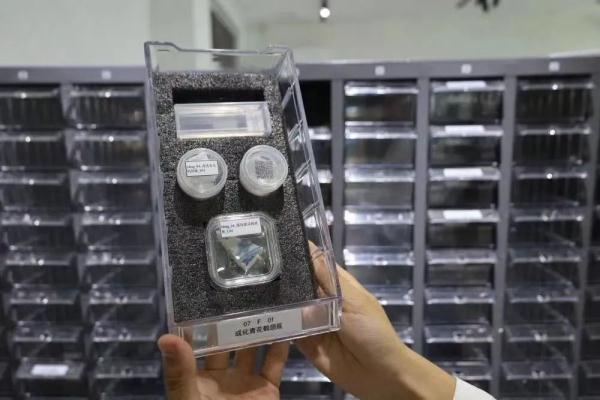The State Administration of Cultural Heritage (SACH), in its "14th Five-Year Plan" for archaeological work, specifically proposed to collect and gather typical archaeological specimens and data resources that reflect the genes of Chinese civilisation, and to build a good gene bank of Chinese civilisation's cultural relics. --Jingdezhen Ancient Ceramics Gene Bank, was officially inaugurated at the Jingdezhen Imperial Kiln Museum.
Jingdezhen is a world-renowned porcelain capital of a thousand years, rich in historical ceramic relics. In decades of archaeological work since the late 1970s, the Jingdezhen Imperial Kiln Museum (Jingdezhen Institute of Ceramic Archaeology) has unearthed a vast amount of kiln specimens and other rich cultural remains from the late Tang to Republican periods, of which the Ming and Qing imperial kiln pieces account for a relatively large proportion. The specimens have been excavated in clear locations, with clear stratigraphy and a rich variety of categories, and the relevant data is highly authoritative.

In July 2021, in accordance with the requirements set out by the State Administration of Cultural Heritage in the 14th Five-Year Plan for Archaeological Work, the Royal Kiln Museum in Jingdezhen, together with Peking University, Tsinghua University, the Palace Museum and the Shanghai Institute of Silicate Research of the Chinese Academy of Sciences, began preparations for the construction of a gene bank of ancient ceramics in Jingdezhen. So far, the "Porcelain Gene Bank Physical Sample Management, Preparation and Preservation Standards (Trial Draft)" has been drawn up, and the construction of the sample-making space and gene bank room and the initial construction of the database management system have been completed.
According to reports, Jingdezhen ancient ceramics gene library after the official inauguration, Jingdezhen Royal Kiln Museum and other plans to use 1.5 years or so, into the library of nearly 10,000 Ming dynasty imperial kiln gene specimens, followed by 3 to 5 years to complete Jingdezhen archaeological excavation of specimens over the years of gene storage work. At the same time, information about the genetic specimens will be collected and an open and shared database will be built. Eventually, through digital technology, a refined model for display, conservation and3D printing will be built, laying the foundation for conservation and research, development of replica and creative products, and the construction of a digital museum.
In the future, Jingdezhen Royal Kiln Museum will also cooperate extensively with various museums and research institutions at home and abroad to achieve open sharing in the collection and use of data. Some analysis points out that the establishment of the Jingdezhen ancient ceramics gene bank, for the construction of ceramic archaeological dating framework system, research and development of ancient ceramics identification methods, the development of technical standards for the ceramic industry, to promote ceramic digital collections and cultural tourism applications, the construction of related international first-class scientific research team and show Chinese cultural confidence, will have an important role.

